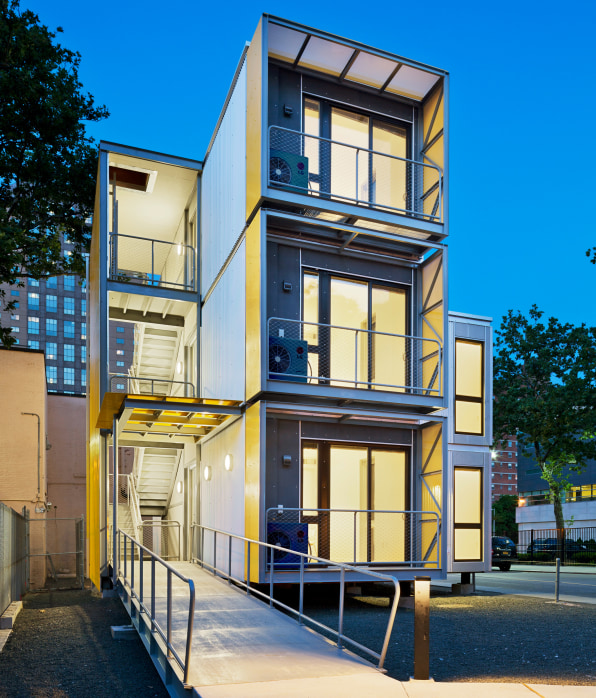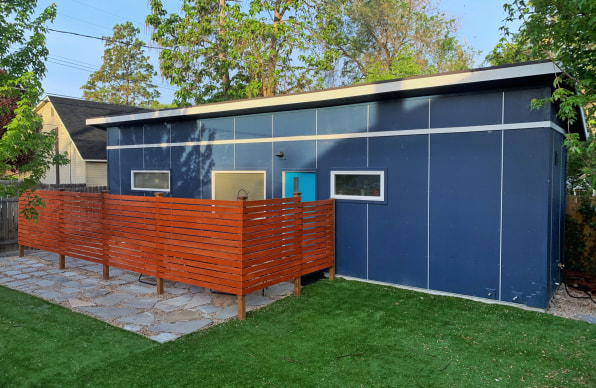When a tiny factory-built house from a startup called Boxabl arrives at a building site, the walls and roof are designed to quickly unfold, and the entire home can be assembled within just a few hours. The design is one of dozens listed on a new website that shares housing concepts that cities can use to rapidly respond to homelessness or in the case of a disaster.
Where will you place your Casita?
Where will you place your Casita? #construction #home #realestate #boxable #boxabl #manufacturedhome #housing #tinyhome
Posted by Boxabl on Saturday, May 23, 2020
The platform, called the Rapid Shelter Innovation Showcase, grew out of work in Los Angeles, where around 60,000 people are homeless on any given night. The Housing Innovation Collaborative, a nonprofit coalition, created the platform to push forward solutions to the housing crisis in the area. The team initially planned to build a physical showcase of new housing, and then the coronavirus struck. As the idea went virtual, the group realized that it could be a resource for cities anywhere. So far, the platform has collected 45 designs, some of which have been built or prototyped; others are concepts. Here are a few of the ideas:

Designed for quick assembly after a disaster, these multistory buildings from Garrison Architects can be built in less than 15 hours. Units range from one to three bedrooms, include kitchens, bathrooms, and storage space, and can be hooked up to solar power.

From a team of Italian designers focused on creating a concept for a shelter for a refugee camp, this design combines a central shared space for socializing with individual rooms that surround it. The designers collaborated with the UN Migration Agency, the engineering firm Arup, and the Laboratory for Effective Anti-Poverty Policies at Bocconi University.

These shelters, from a company called Connect Homes that makes sustainable factory-built homes, are assembled almost entirely off-site and then can be quickly installed without a foundation or in-ground utilities. Each unit comes with a bedroom and bathroom; because the units are isolated from one another, with separate plumbing and mechanical systems, they could also be useful for COVID-19 patients.

This concept for lightweight prefab rooms—designed by Alejandra Novelo and Khoa Vu in collaboration with Gensler—are laid out with space in between to allow for increased daylight and ventilation and to create shared community spaces. Using standard scaffolding and low-cost prefab modules lowers the cost.

Built using 40-foot-long shipping containers by the green builder IndieDwell, these energy-efficient shelters have been built in several cities, including 100 in San Jose, California.

These prefab apartment buildings from a Canadian company called Horizon North Modular Solutions, typically made with 250-square-foot apartments, can be quickly constructed on a relocatable foundation that can later be moved to another site. More than 1,500 units are in place in British Columbia.

Architects using the new platform can quickly research other approaches in the space and begin to incorporate ideas from other designs. “We’re trying to be sort of an anti-RFP innovation competition,” Ligety says. “We want to encourage it to be a collaborative process.”
August 13, 2020 at 05:00PM
https://www.fastcompany.com/90538446/45-innovative-solutions-for-beautiful-easy-to-build-housing-to-help-cities-with-the-homelessness-crisis
The Rapid Shelter Innovation Showcase features easy-to-build housing - Fast Company
https://news.google.com/search?q=easy&hl=en-US&gl=US&ceid=US:en
No comments:
Post a Comment